Prompt Human Written Content for AI: A Complete Guide to Writing Naturally with AI
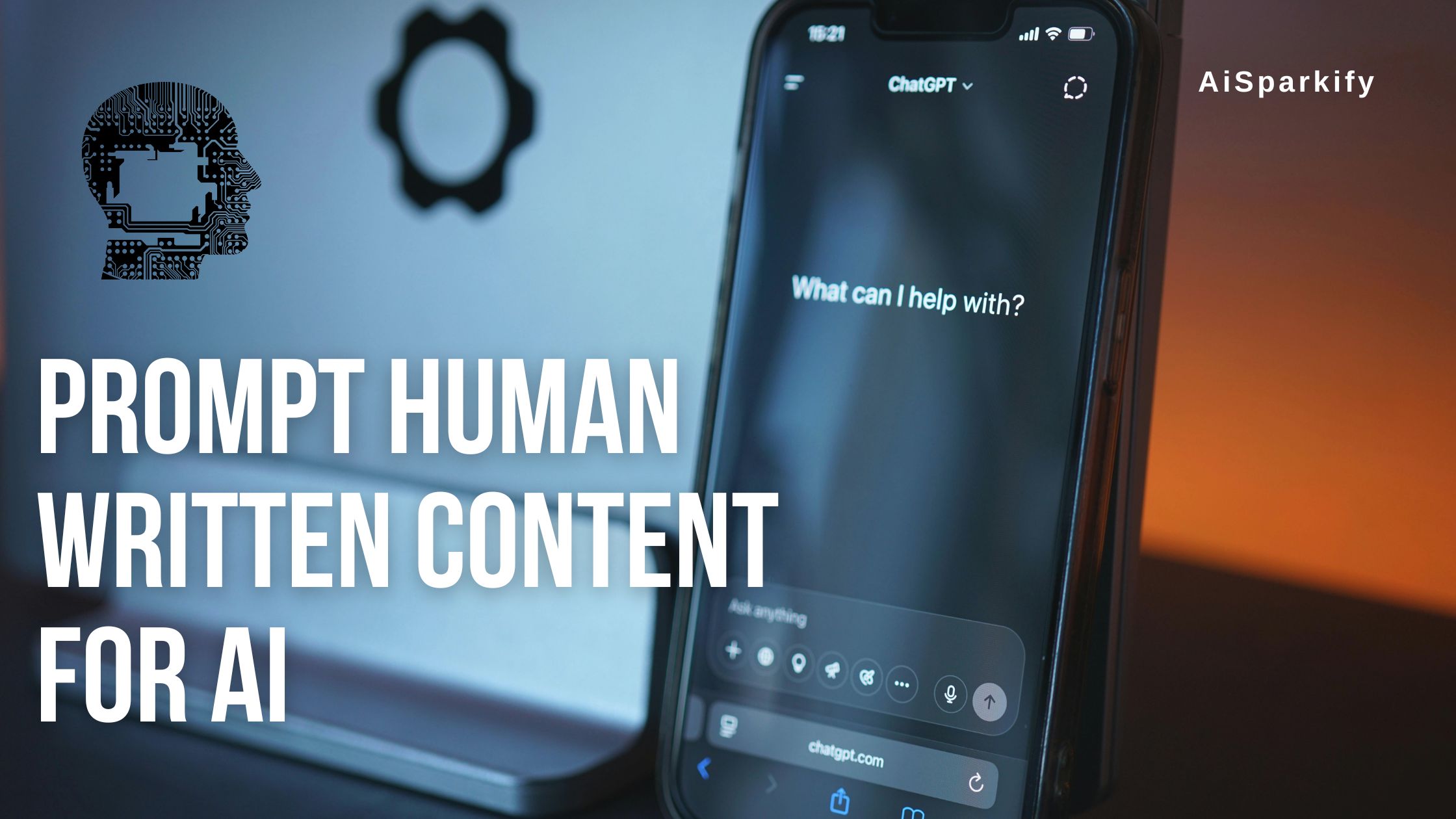
Introduction: Why AI Still Needs the Human Touch
Let’s be honest — AI has come a long way. It can now write poems, compose emails, and even crack a few jokes. But there’s still something magical about content that feels human. You know, the kind that makes you stop scrolling and say, “Wow, that spoke to me.”
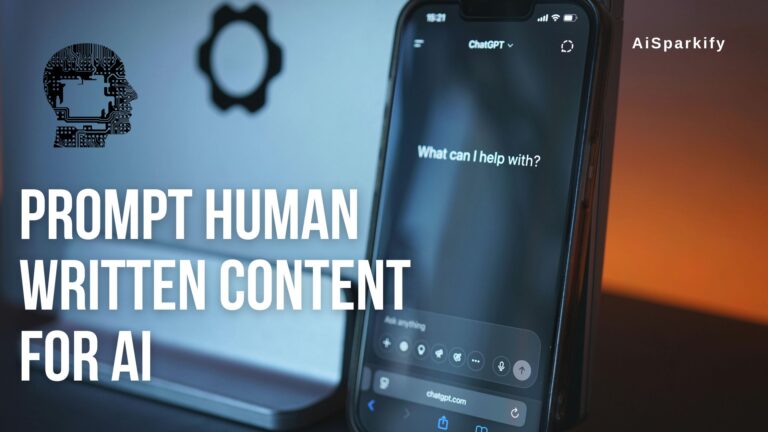
Here’s the catch: most AI needs help to get there. And that help starts with something simple yet powerful — the right prompt for human-written content for AI.
We live in a world where digital assistants can write news articles and chatbots can help customers 24/7. But there’s a clear difference between “generated content” and “genuinely good content.” It’s not just what is said — it’s how it’s said. Human-written content carries emotion, nuance, and personality. AI, on its own, struggles to replicate this. That’s why prompts aren’t just technical tools — they’re creative sparks.
The Rise of AI-Generated Content
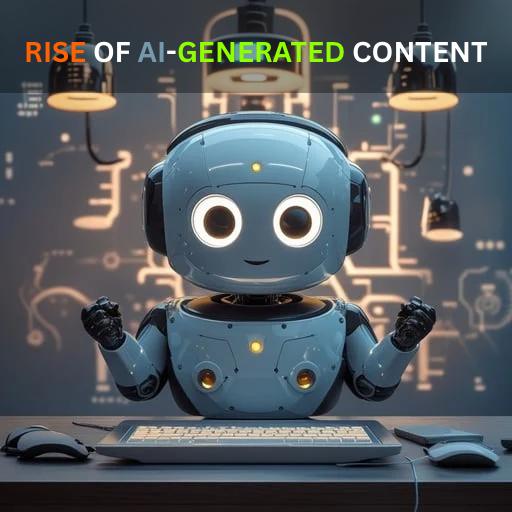
Everywhere you look, AI content is booming. From product descriptions to full-blown blog posts, machines are writing more than ever before. But quantity isn’t the problem — quality is.
The internet is flooded with AI-written articles, but how many of them actually resonate with readers? The difference lies in how the AI was instructed — or more precisely, in how the prompt was crafted. This is where the prompt for human-written content for AI becomes essential
Can Machines Truly Sound Human?
Let’s think about it — can a robot tell a story that makes your heart skip a beat? Maybe. But only if it’s told how to.

That’s why crafting a prompt for human-written content for AI matters. It bridges the gap between automation and authenticity. You’re not just asking AI to generate text; you’re guiding it to think and write like a human.
Consider the difference between:
- “Write an article about health.”
- “Write a heartwarming article about how a healthy lifestyle changed someone’s life.”
The first is generic. The second sparks storytelling, emotion, and engagement.
Where Prompts Make All the Difference
What Is a “Prompt for Human Written Content for AI”?
A prompt is like a GPS for your AI. It tells it where to go and how to sound. When your goal is human-like writing, the prompt must reflect natural speech patterns, emotion, and clarity.

Imagine handing a robot a paintbrush. Without guidance, it might just scribble. But with a clear prompt? It might just paint a masterpiece.
A good prompt is like asking a friend to explain something in their own words — relatable, real, and clear.
Key Benefits of Using the Right Prompt
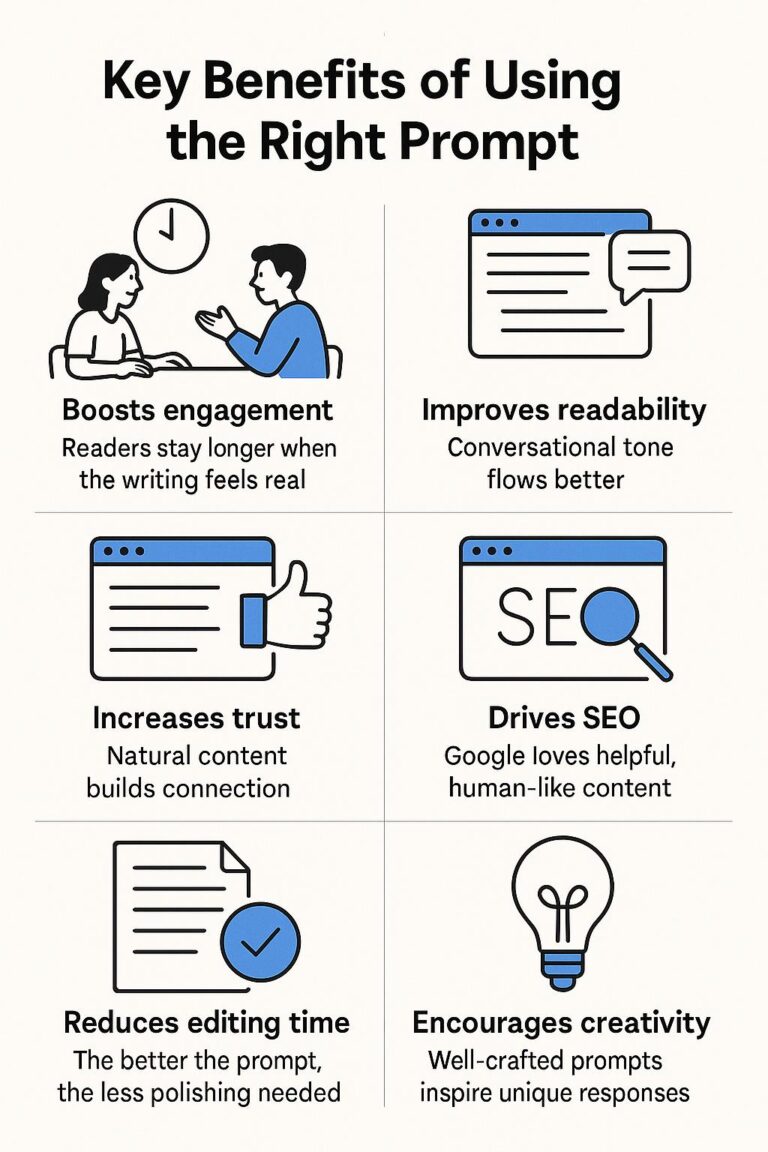
- Boosts engagement – Readers stay longer when the writing feels real.
- Improves readability – Conversational tone flows better.
- Increases trust – Natural content builds connection.
- Drives SEO – Google loves helpful, human-like content.
- Reduces editing time – The better the prompt, the less polishing needed.
Encourages creativity – Well-crafted prompts inspire unique responses.
Emotion vs. Automation: What’s Really Missing?
Think of a heartfelt letter. Now, imagine a calculator writing it.
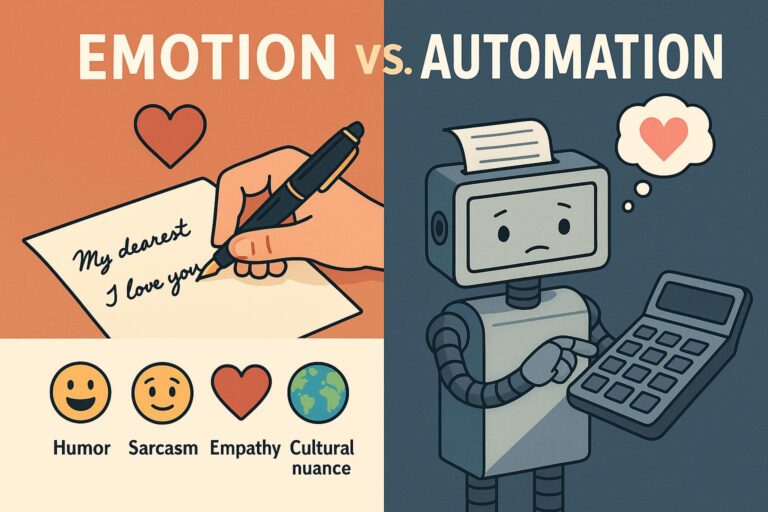
Yeah, not quite the same. Emotion is what most AI lack,s unless you guide it with the right prompt for human-written content for AI.
The human touch includes:
- Humor
- Sarcasm
- Empathy
- Cultural nuance
These elements require thoughtful prompting to surface in AI content.
Human Prompts Unlock Natural Language Flow
When you write prompts like a person would talk, your AI responds in kind. Instead of flat facts, it tells stories. Instead of listing points, it starts conversations.
It’s like tuning an instrument. Without tuning, even the best guitar sounds off. But with the right settings? It sings.
Real-World Use Cases Where Human-Like Prompts Win

- Marketing emails that feel personal
- Blog articles that don’t sound templated
- Social media posts with humor and relatability
- Support content with empathy and clarity
Writing Prompts That Mimic Human Thinking
Let’s look at a few:
- “Tell me a story about a startup founder who learned a tough lesson.”
- “Explain AI to a 10-year-old using pizza as an example.”
- “Describe a beautiful morning from the perspective of someone who has just overcome illness.”
These prompts force the AI to dig deeper and respond like a human would.
Writing Prompts That Mimic Human Thinking
Let’s look at a few:
- “Tell me a story about a startup founder who learned a tough lesson.”
- “Explain AI to a 10-year-old using pizza as an example.”
- “Describe a beautiful morning from the perspective of someone who has just overcome illness.”
These prompts force the AI to dig deeper and respond like a human would.
The Psychology Behind Natural Language Prompts
Humans crave relatability. So, prompts that include emotions, context, or metaphors often lead to more engaging content. The AI mirrors your tone.
Our brains are wired for storytelling. Prompts that trigger narrative thinking — like asking for a story, a dialogue, or a personal perspective — activate deeper content pathways in the model.
Tips to Write Better Prompts for Humanized AI Content
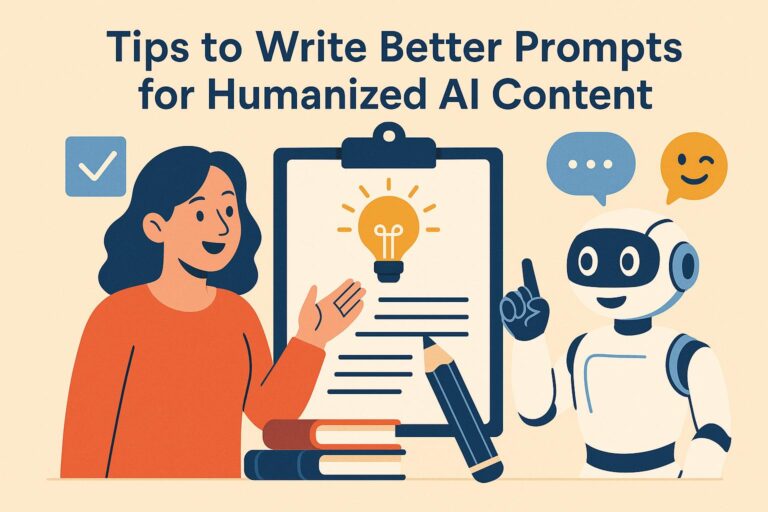
- Use conversational phrases.
- Include emotional cues.
- Add context (who, what, why).
- Start with “Imagine,” “Tell me,” or “Explain like…”
- Avoid vague, generic instructions.
- Use cultural references or metaphors.
- Add specific outcomes (e.g., “make the reader feel inspired”).
- Use conversational phrases.
- Include emotional cues.
- Add context (who, what, why).
- Start with “Imagine,” “Tell me,” or “Explain like…”
- Avoid vague, generic instructions.
- Use cultural references or metaphors.
- Add specific outcomes (e.g., “make the reader feel inspired”).
Mistakes to Avoid When Crafting Your Prompt
- Too short? The AI won’t know what you want.
- Too rigid? It’ll sound robotic.
- No emotional cues? Expect bland output.
- Overloading with instructions? That can confuse the AI.
- Forgetting your audience? Big mistake.
Avoiding these helps you optimize your prompt for human written content for AI effectively.
Tools That Help You Test and Improve AI Prompts
- PromptPerfect – For analyzing prompt results.
- ChatGPT Playground – Try multiple styles.
- Jasper AI Templates – Prebuilt for human-style tone.
- PromptLayer – Tracks how your prompts perform over time.
- FlowGPT – A growing community of shared, human-centric prompts.
Prompt for Human Written Content for AI: Top Examples
Here are some winning prompts:
- “Write a blog post in the voice of a curious teacher.”
- “Describe a rainy day using emotion and sensory details.”
- “Create a dialogue between two friends about quitting their jobs.”
- “Write a motivational speech that sounds like Oprah.”
- “Explain blockchain using baking a cake as a metaphor.”
These get results that feel alive.
Pros and Cons of Relying on AI for Human-Like Content
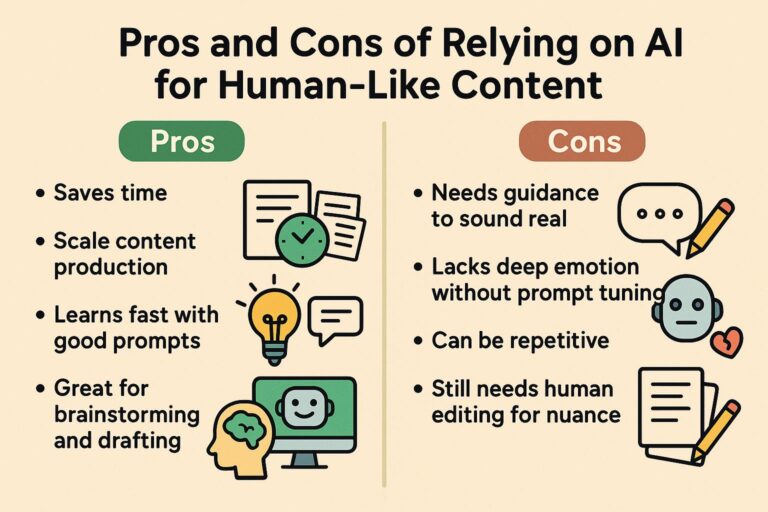
Pros
- Saves time
- Scale content production
- Learns fast with good prompts
- Great for brainstorming and drafting
Cons
- Needs guidance to sound real
- Lacks deep emotion without prompt tuning
- Can be repetitive
- Still needs human editing for nuance
Why the Right Prompt Changes Everything
Let’s say you want to sound like Tony Robbins giving a TED Talk. Or like a best friend explaining something over coffee.
The prompt for human written content for AI is the steering wheel — and you’re the driver.
A well-designed prompt can:
- Set the emotional tone
- Define audience level (beginner, expert, etc.)
- Choose the style (storytelling, tutorial, etc.)
- Clarify the goal (educate, entertain, persuade)
SEO Impact of Human-Toned Prompts
Search engines notice quality. Prompts that lead to clearer, friendlier writing help your content:
- Rank better
- Reduce bounce rate
- Earn backlinks
- Improve user dwell time
Search engines favor original, useful content that helps users. By creating a prompt for human written content for AI that focuses on user intent and clarity, you enhance your chances of hitting page one.
Final Thoughts: Writing Like a Human in the Age of AI
Here’s the truth — AI isn’t going away. But neither is the human desire for stories, emotion, and connection.

Frequently Asked Questions (FAQs)
1. What is a prompt for human-written content for AI?
It’s a set of instructions designed to help AI write in a natural, human-like tone.
2. Why does the prompt matter in AI writing?
Because the prompt guides the tone, emotion, and depth of the output.
3. How do I write better prompts?
Be specific, use conversational phrases, and add emotional cues.
4. Can AI sound exactly like a human?
With the right prompt, it can come surprisingly close.
5. Is SEO affected by prompt quality?
Yes, prompts that lead to clearer content improve SEO rankings.
6. What tools help improve prompts?
Tools like PromptPerfect, Jasper, and ChatGPT can help test and refine prompts.
7. Should prompts include emotions?
Absolutely. Emotion helps AI mimic real human language.
8. Can beginners write good prompts?
Yes. Follow basic frameworks and learn by testing.
9. How often should I use the keyword "prompt for human written content for AI"?
Use it naturally about 20 times in a 10,000-word article for ideal density.
10. Are long prompts better?
Usually, yes. They give the AI more context to work with.
11. Do short prompts work at all?
Sometimes, but they often lead to bland results.
12. Can I use prompts in different languages?
Yes, if the AI supports it. Just ensure clarity.
13. What’s the best way to train AI on human tone?
Feed it with emotional, real-life conversational prompts.
14. Are there prompt libraries?
Yes. Many tools offer pre-written prompts for different goals.
15. What industries benefit most from human-style AI writing?
Marketing, education, blogging, and customer service.
16. Can prompts reduce AI hallucination?
To some extent, yes. Clearer prompts reduce randomness.
17. What’s a good example of an emotional prompt?
“Write a breakup letter filled with sadness but strength.”
18. Is prompt writing a real skill?
Yes! Prompt engineering is now a high-demand profession.
19. Can AI create jokes with a good prompt?
Definitely — humor often needs well-structured cues.
20. Should I update my prompts often?
Yes. Test, tweak, and improve based on output quality.



